Q&A | Thoughts on Moleskine notebooks, sticky pages & multiple journals
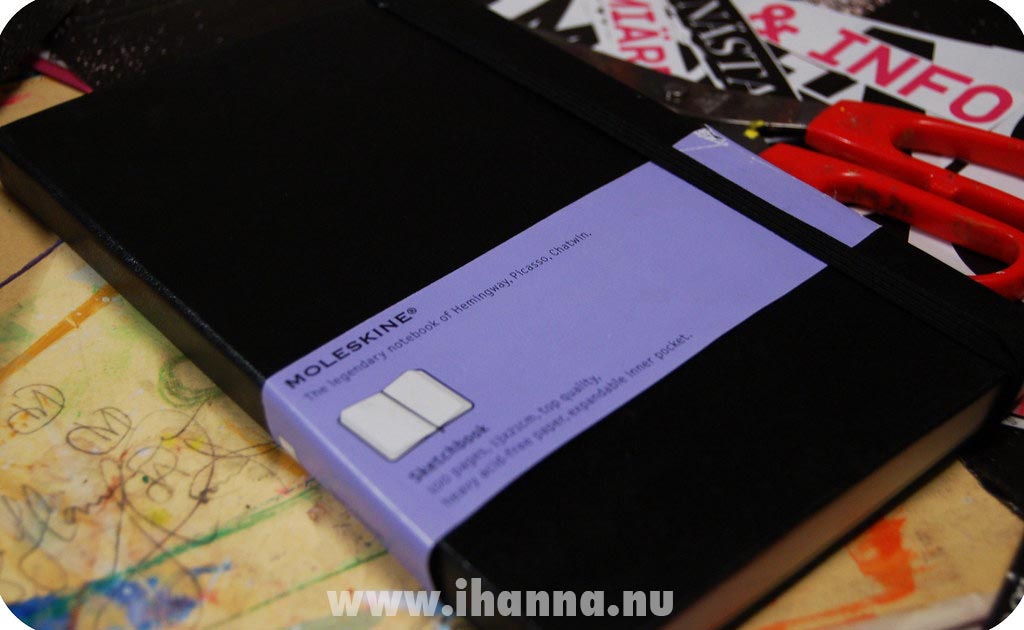
Art journaling – week 7 check in.
Today I thought I’d post a few questions on art journaling that I’ve gotten lately in the mail, so that maybe others too can benefit from the answers. I hope. Enjoy!
Moleskine notebook as Art Journal
Nicole’s question: Wishing my journal was as pretty as yours. My reason for writing is that I think I want to give art journaling a try when I start my new journal. I’ve been looking at getting a large Moleskine plain notebook.I saw that you do some art journaling in it, and I was wondering about the quality. I’ve heard some reviews where the paper is really thin, and even pen ink can sometimes leak through. What is your experience? I will be ordering them from Amazon – if I get them – so I can’t test it for myself, and I don’t want to waste $$.
My answer:
Nicole, thanks. There are many different kinds of notebooks that you can use, Moleskine is one brand that is quite expensive but that many people love. I often use the Plain Notebook kind to write in, as my daily journal for jotting down ideas. I don’t paint in it at all but sometimes I do glue in images and make a what I call diary collage. For a painting class with SuziBlue I bought the Large Sketchbook by Moleskine because its paper resembles manilla folder or cream colored cardstock. From the few pages I’ve filled in that particular sketchbook I can tell it will take a lot of glue and paint without curling, though I think the size is a bit to small. I prefer bigger books like cheap altered books where the pages are not so precious. There is also the Watercolour Notebook by Moleskine but I haven’t tried it yet. I hope this clears your confusion and helps on what you want to buy!
Sticky pages
Margaret’s question: I have this problem when I use acrylics that the pages always remain sticky even years later! Clear gesso left the page all gritty and made the ink go funny! Any ideas, other possibilities?! Many many thanks for everything… keep shining your light on us ;-)
My answer: I usually don’t have this problem with my pages, I’m not sure why. My suggestion for sticky pages is;
1) leave the book open over night to let everything dry,
2) use a baking parchment paper or similar between the sheets when you close the book if you’ve painted a lot with heavy acrylics or glossy paint and if this doesn’t help you can
3) coat the whole spread with a layer of matte medium (not gel medium but the thinner kind). I hope this helps. You will need to only use water-resistent inks on the page because the wet medium will otherwise smear anything you’ve written. There are so many different kinds of acrylics too, maybe you should try another brand? Mine can stick but after a few days they are okay to close the book and not stick together even on whole painted pages. I hope this helps, also check out Samantha Kira’s video about sticky pages!
Multiple journals
Question from Cath: Hello there! I always end up asking you questions (seriously you’re just so talented!). Anyway I was wondering: besides your art journals do you keep a writing journal too? I always kept a writing journal (I write way too much) but I really want to art journal, but I don’t know if it’s best to separate them or not. Or at least have one art only. Do you find this difficult or not really? I’m thinking in doing the nudges so I can really start in art journaling.
My answer: Hi Cath! Thanks! I don’t know if you read Kristin’s interview with me over at Journaling saves but there I only talk about my written journal, something I did long before I started art journaling and always will continue to do. I write a lot too and I don’t think it can be “too much” of that. I couldn’t do all that writing in a painted and decorated art journal, that would take too much time for me. So I write in a notebook and do artsy stuff in altered books (with thicker pages) or on watercolour paper that I bind into books. So the answer is that I keep at least two books, mostly because I can’t write page after page of journaling on pretty watercolour paper and I can’t use wet media on thin paper so I need two books for the separate activities.
When I started art journaling I was struggling with writing a lot, where to write and what to express and there is no space left to write on etc. After a while I found what works for me and these days I don’t think much about it. Sometimes I will write on a page, most of the time I won’t or just add a few words here and there.
Art journaling is a process that is constantly evolving. I started with spiral notebooks, went on to altered books and these days I enjoy binding my own journals. When you start you can look for 1000 answers from more experienced artists and look through many books but in the end you can find inspiration but never Your Own Way. The only way to find your style, favorite notebook and favorite art supplies is to dive in head first and start experimenting! That’s what I did. I hope you’ll take some time for your art journal this week end! Thanks and have a great day!
Discover more from iHannas Blog
Subscribe to get the latest posts sent to your email.

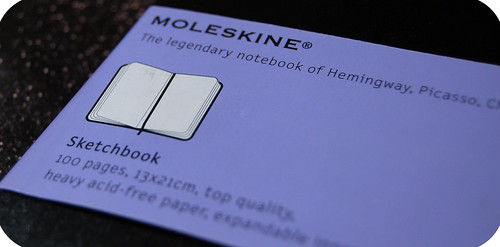
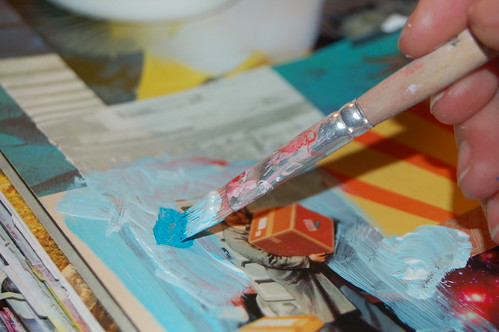
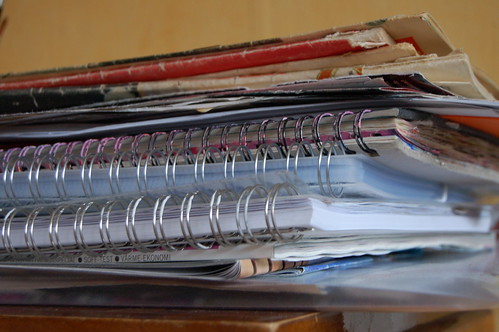


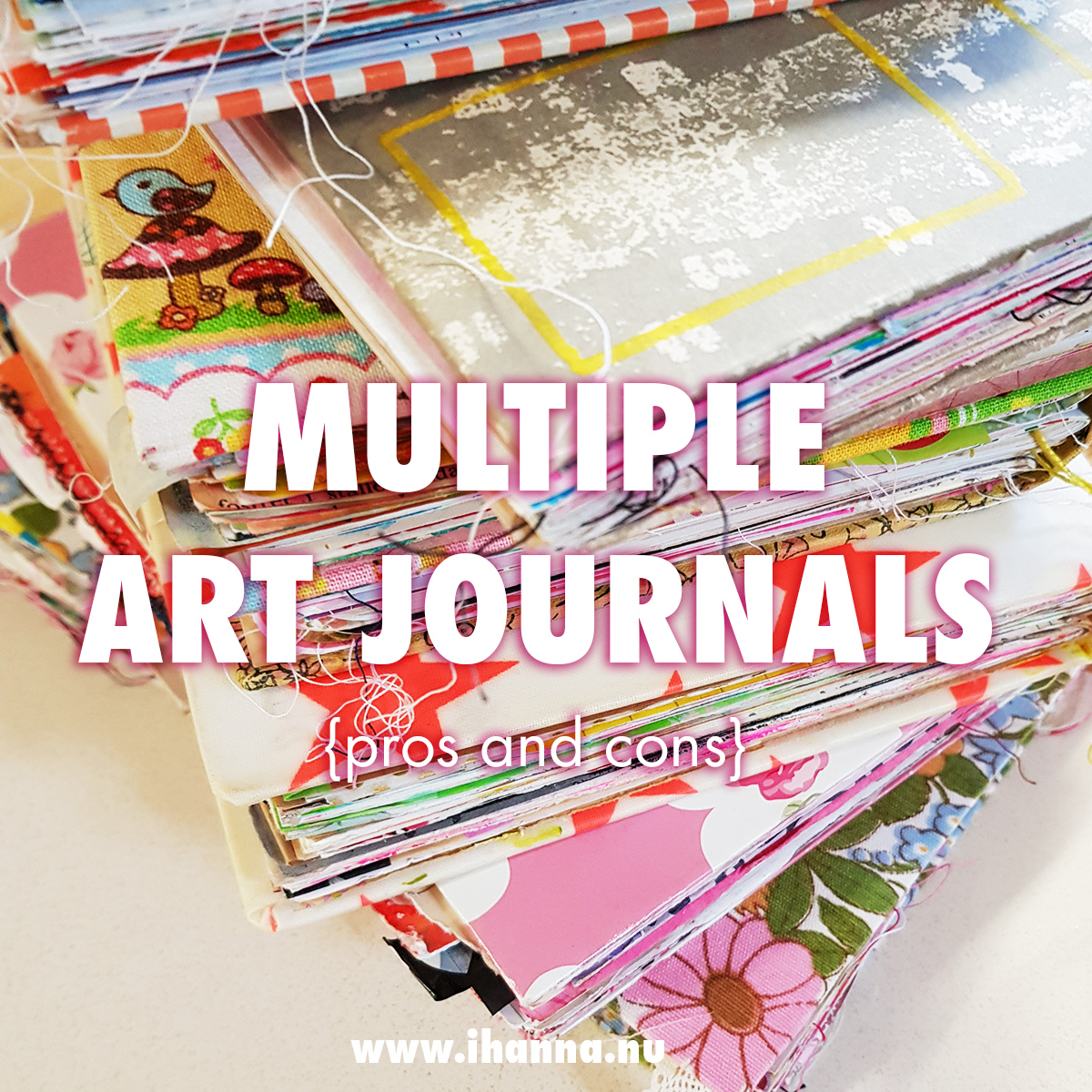
I have one solution for sticky pages … I rub candle wax over it. Honestly it works like a charm and NO drying time! I have a block of the wax and that is what I use.
I love reading your blog. There’s always something interesting and this time also usefull.
I have a solution for sticky pages also :) I’m using this product to protect pages after finished.. love it, smels great and gives a nice finishing touch. Sharon at Norah’s faces tought us how to use it.
Ups, almost forgot the link: http://www.jacquardproducts.com/products/dorlands/
Great post! I started doing visual journaling only last year and have really fallen in love with it. I use the moleskine sketchbook large one it takes a good amount of beating up for sure! I tried the water color one and for me the paper was great but the format I just did not like as much. The sketchbook is the perfect size and great paper. I am on my second one! The plain moleskine is great for just collage with a gluestick but not as good for paint and layers.
For me I really just worked through the judgement (of myself, comparing) and kept working on different mediums of it until I found what I really like. You can get a glue stick, magazines, bubble wrap, and cheap paint!
Sorry, I got pumped up talking about it!
I use the Moleskine Watercolour journals – large or A4. The landscape nature doesn’t always suit me but I can live with it. I think they are beautiful and take any and every art journalling beating you can give. I’m yet to try the Sketchbook one yet but adore the watercolour. Here in Australia we pay $32.95 for one you pay $15 for, so I order mine online from the US and I think they are brilliant value. HTH!
I love your blog! I really enjoyed your answers today as well! I had another idea for the sticky page question, and have found a similar problem when using a gel medium as a final coat. If you apply a light coat of baby powder to your page, it takes care of the sticky problem!
thank you for all the information. i am new to art journalling & have not looked into different types of journals yet. could you tell me what you mean by “altered book” please? thanks again.
An altered book is any regular published book that an artist takes and “alters,” often by collaging and painting the pages, or gessoing the pages and using it as a journal. If you search for the term on google, you will find a lot of information. :)
I find that different kinds of acrylic paint are stickier than others. The cheap paints are actually less sticky than the more expensive liquitex and golden paints. They just don’t have as rich color. I use clear transparencies over some pages that are really sticky. Drying it in front of a heater also works for me.
Thanks everyone for commenting and adding in your own ansers to the questions. With art journaling, there is no “right” answer, just many different ideas! That’s why I love it!
Raylee, Karis has written a very good anser below your question in the post, and I plan to write a tutorial on how I alter thrifted text books into art journals by tearing out pages, using gesso to paint on and generally making them into something artsy and fun! Also, I’ve written about my altered art journals a lot on my blog, and I show lots of pages from my own if you look in the archive in the category art journaling! :-)
I have used lots of moleskins. The watercolour ones have nice thick watercolour paper and do there job well, they do not curl when loaded up with water. However be careful that you purchase the version of this notbook WITHOUT the pre made rip lines, or else the idividual pages will fall out, if you make them to heavy(collage and paint). Also Personally I did not like the long, skinny format of these notebooks and lastly you cannot use stamps on these as the surface is to bumby, even after you prep it with gesso.
Love your blog hanna:)
Thank you for answering! I’m working on my art journal lately and it has become less difficult to stop writing and write only something simple because I’ve two separate journals.
Sometimes I do have the problem of sticky pages when I put way too much paint, when I dilute my paints it doesn’t do that. I’ll try the baby powder method.
Thanks Banco, for linking to me from your blog and writing about your notebook uses! I love watercolour papers too, but I usually (these days) bind my own in a size I’m more comfortable with than the Moleskine one.
Cath, my pleasure! Writing is good for the soul, as is art and messy pages, so I think a balance betweent the two is a good thinkg. Diluted paints is another good way to create colour washes that won’t be sticky, thanks. Enjoy your art journaling!
thank you karis & ihanna for answering my question, i am looking forward to your tutorials & will look at the archives. thank you for the inspiration & the information.
I have another solution to the ‘sticky pages’ problem: spray some talcum powder (baby powder, you know what I mean) on the page. Use only a little powder. I got this tip from a printer, and I know it works.